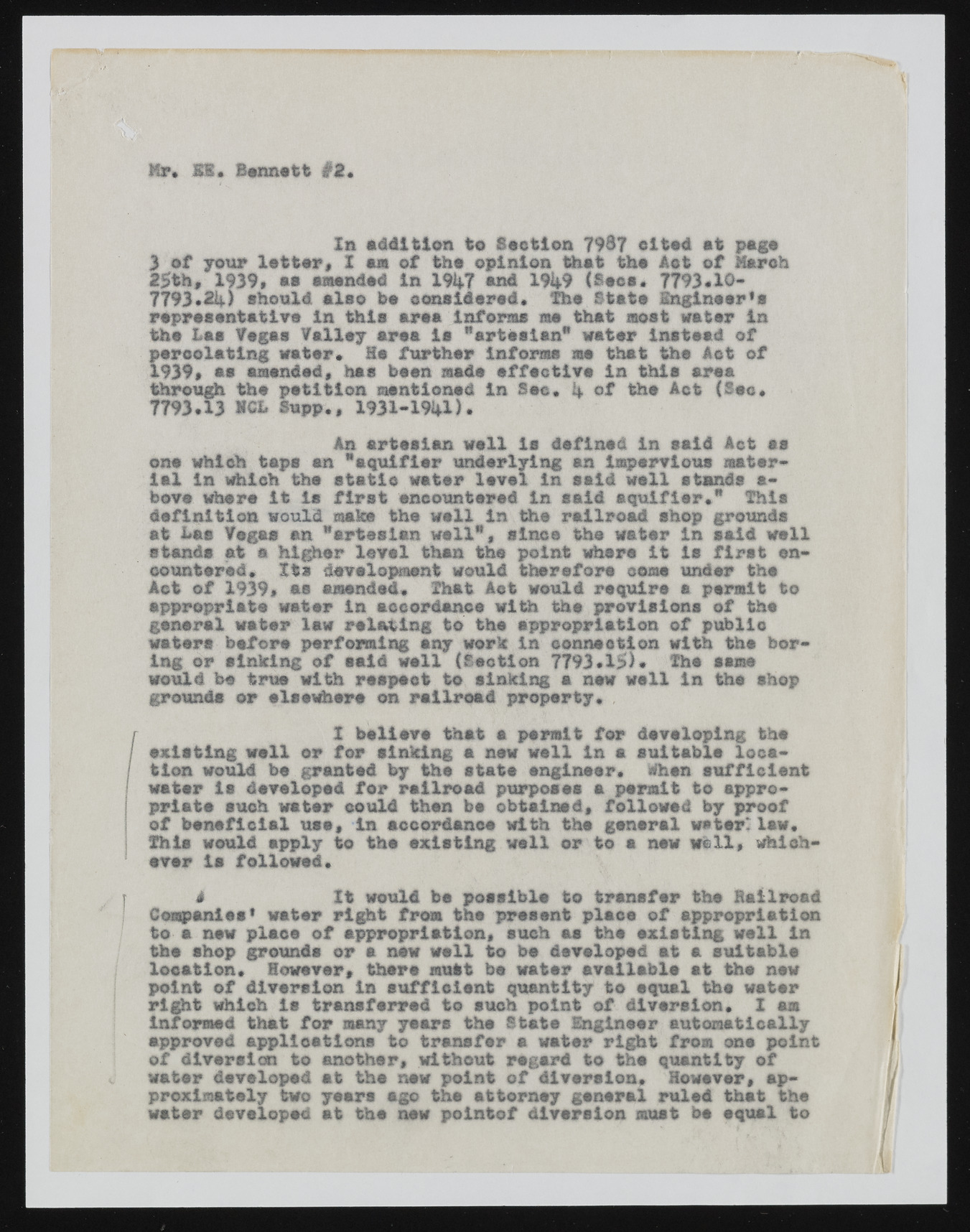Copyright & Fair-use Agreement
UNLV Special Collections provides copies of materials to facilitate private study, scholarship, or research. Material not in the public domain may be used according to fair use of copyrighted materials as defined by copyright law. Please cite us.
Please note that UNLV may not own the copyright to these materials and cannot provide permission to publish or distribute materials when UNLV is not the copyright holder. The user is solely responsible for determining the copyright status of materials and obtaining permission to use material from the copyright holder and for determining whether any permissions relating to any other rights are necessary for the intended use, and for obtaining all required permissions beyond that allowed by fair use.
Read more about our reproduction and use policy.
I agree.Information
Digital ID
Permalink
Details
Member of
More Info
Rights
Digital Provenance
Publisher
Transcription
Mr* K8. Bennett #2* In addition to Section 7987 eitod at page 3 of your letter, I on of tho opinion that the Act of March 25th, 1939« aa amended in 194-7 and 1949 (Secs* 7793* 10- 7793*24) should also ha considered* The State Engineer's representative in this area inform* raa that most water in tha Lea Vegas VaHay area is "’artesian* water instead of percolating water* Be further inform* me that tha Act of 1939* aa amended, has been made effective in this area through tha petition mentioned in See. % of tha Act (See* 7793*13 VCL Supp., 1931-1941). An artesian wall is dtfined in said Act as one which taps an "aquifier underlying an impervious material in which tha static water level in said wall atends a- beve where it is first encountered in said aeguifiar." This definition would make the well in the railroad shop grounds at las Vegas an “artesian wall*, since the water in said well stands at a higher level than the point where it is first encountered, Its development would therefore come under the Act of 1939, as amended* That Aet would require a permit to appropriate water in accordance with the provisions of the general water law relating to the appropriation of public water* before performing any work in connection with the boring or sinking of said well (Section 7793*15)* The tame would be true with respect to sinking e new well in the shop grounds or elsewhere on railroad property* X believe that a permit for developing the exitting well or for sinking a new well in e suitable location would be granted by the state engineer* When sufficient water it developed for railroad purposes a permit to appropriate euoh water could then be obtained, followed by proof of beneficial use, in accordance with the general water', lew* Shis would apply to the existing well or to e new well, whichever Is followed* 4 It would be possible to transfer the Railroad Companies' water right from the present place of appropriation to e new place of appropriation, such aa tha axisting well in the shop grounds or a new well to be developed at a suitable location* However, there mutt be water available at the new point of diversion in sufficient quantity to equal the water right which is transferred to such point of diversion* I am informed that for many years the State Engineer automatically approved applications to transfer a water right from ame point of diversion to another, without regard to the quantity of water developed at the new point of diversion, However, approximately two years ego the attorney general ruled that the water developed at the new pointof diversion must be equal to

